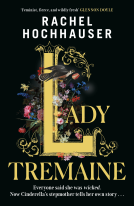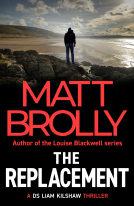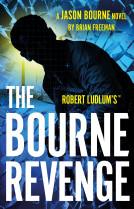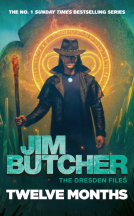
On the Horns of Death
An Ancient Crete Mystery
by Eleanor Kuhns
This title was previously available on NetGalley and is now archived.
Send NetGalley books directly to your Kindle or Kindle app
1
To read on a Kindle or Kindle app, please add kindle@netgalley.com as an approved email address to receive files in your Amazon account. Click here for step-by-step instructions.
2
Also find your Kindle email address within your Amazon account, and enter it here.
Pub Date 2 Apr 2024 | Archive Date 14 Jun 2024
Talking about this book? Use #OnTheHornsofDeath #NetGalley. More hashtag tips!
Description
Ancient Crete, 1450 BC. Young bull leaper Martis finds Duzi, the newest member of the bull leaping team, dead in the bull pen early one morning. Made to look like he met his end on the horns of the bull, it's clear to Martis that this was no accident . . .
Martis once again finds herself thrown into a dangerous game of hunting down a murderer as the deaths start to mount. An old friend of Martis' sister, and possible lover to Duzi, is the next person to be found dead, and Martis' investigations lead her to believe love and jealousy are at the heart of these crimes against the Goddess.
Is someone targeting the bull leaping community? Or is there something else at play? With only the Shade of her sister Arge to confide in, Martis struggles to untangle the growing web of secrets which stretches around her.
Advance Praise
“This complex, character-driven mystery is loaded with fascinating historical details”
Kirkus Reviews on In the Shadow of the Bull
“This complex, character-driven mystery is loaded with fascinating historical details”
Kirkus Reviews on In the Shadow of the Bull
Available Editions
| EDITION | Other Format |
| ISBN | 9781448310883 |
| PRICE | US$29.99 (USD) |
| PAGES | 224 |
Available on NetGalley
Average rating from 19 members
Featured Reviews
I really enjoyed reading ‘Shadow of the Bull’ and was excited to continue Martis’ journey in Ancient Crete in ‘On the Horns of Death’.
The story picks up around 7 months after the concluding events of ’Shadow of the Bull’ and I think reading it first definitely enhances the experience of reading ‘On the Horns of Death’ especially in the establishment of the setting and Martis’ family and surrounding characters. Like the first book, there are very detailed descriptions of the environment, regalia and general appearances that really evokes the images associated with Ancient Crete and the surviving scenes we see on the Palace of Knossos today. Additionally, Martis’ character has been built upon and she has seemingly grown and matured after the events of book one and her advancement working with the bulls. What I love about this book is that as much as it is a murder mystery novel, the characters are well fleshed out and developed, with women featuring prominently instead of 2D side characters.
The murder-mystery element is established really early in the story and the mystery was woven into the story with new and existing characters really well. I honestly had no hunch on who the murderer was, I was really intrigued and compelled to finish the story and get answers. I do wish there was a bit more closure at the end, I felt it was very abrupt.
Thank you to NetGalley, and the publisher Severn Press, for giving me the opportunity to read this book in exchange for an honest review, these thoughts are all my own.
 Mary H, Reviewer
Mary H, Reviewer
An exciting tale about bull leapers in ancient Crete. Good and well drawn characters and a page turner. What more can a reader ask? I recommend the novel highly. Thank you to netgalley and the publishers for giving me a copy of the book.
After falling down the Cozy Mystery hole, I've come to expect a certain formula and location for these types of books. So I was extremely interested in a mystery that was similar to the cozies I loved but set in Ancient Crete! Having actually been to Knossos a couple of times, the location was already familiar to me. But the author brought life to the ancient ruins with an amazing and diverse cast and a puzzling mystery to solve. It's hard to review a book like this without giving away the ending so I'll just say that I loved the main character and how she worked her way though the various clue and suspects. The supporting cast was fleshed out enough that you actually care for them and I'm very interested in seeing follow up books that would expand on these people.
My only concern? I need more historical information! Thankfully the writer added some at the end but I still wanted to get a bit more information about the ancient Minoan practices. Maybe even a map of Knossos as it would exist in the novel?
 kATHLEEN G, Reviewer
kATHLEEN G, Reviewer
I missed the first book but no matter- this cozy (no other term for it) set in ancient Crete is just as enjoyable as a standalone. Mattis, a bull leaper searches for the villain who killed a new addition to team and finds some tangled secrets. I liked the atmospherics and learning a bit about the time period. Thanks to Netgalley for the ARC. A easy fast read from an expert at historical mystery.
Once again, Martis finds herself at the heart of an unexplained death, when she is actually the person who discovers the first body in very distressing circumstances. While the plotting and the quest for the murderer has to be one of the narratives driving the story in any whodunit – this time around, I find I’m equally entranced by all the details surrounding Martis’s everyday life.
I have visited Crete and the palace of Knossos, albeit back when Noah was knee-high to a hen, so reading a story in that setting is a joy, particularly when it’s done as well as it is here. One thing that stood out for me is that everyone generally is getting everywhere on foot. No leaping on a horse/stagecoach/motor bike to rush to wherever you need to go. This affects the pace a bit – but means the young protagonist is extremely fit and that as people age, their infirmities bite a lot harder.
Martis is only sixteen, very headstrong and restless while trying to discover what it is she wants in life. What she doesn’t want is to settle down, get married and have children, which immediately makes her a bit different from the majority of young women she knows. However, I liked the fact that while she’s unusual, she isn’t regarded as some freak. Women had a lot more choices in the Minoan civilisation as they were the ones who held property and men married into the matriarchal family. Teenagers from historical times tend not to be as air-headed as their modern peers, because everyone grew up far more quickly in a time when the life expectancy was a lot shorter. So if you tend to avoid teenage protagonists because you don’t want the angst, it’s dialled down here. That said, Kuhns hasn’t made Martis act like a responsible thirty-something, either. I think she’s got the balance just about right.
The bodies stack up and Martis finds herself finding out a lot more about her dead sisters and their friends as she sets about trying to discover who’s doing the killing and putting a stop to it. Once we got to the denouement – the killer wasn’t who I was expecting, but it wasn’t wholly satisfying for reasons I don’t want to go into here, because I’d be lurching into Spoiler territory. Nonetheless, I thoroughly enjoyed being immersed in the vividly depicted world Kuhns has woven and would be very happy to revisit it. Recommended for fans of historical murder mysteries. While I obtained an arc of On the Horns of Death from the publishers via Netgalley, the opinions I have expressed are unbiased and my own.
8/10
 Librarian 431790
Librarian 431790
This is a good series that makes you meet the characters you see in the Micenean frescoes. Well plotted and compelling, a travel in time and space that kept me guessing and reading.
Martis is a likeable character and the historical background is fascinating.
Highly recommended.
Many thanks to the publisher for this ARC, all opinions are mine
More Dangerous for Bull Jumpers Than The Bulls
Martis is late and hurries into the caves below Knossos. She smells blood as she enters. The bulls are agitated, especially the one chosen for today’s ceremony. The bull had damaged the side of its pen. She could not force herself into the circle of older male jumpers. She goes around them and peers through the damage. She lowers herself to see through a larger gap for a better look. She sees a bloody body that has been gored and stomped. Their trainer calls for someone to get Tinos, who serves as the chief administrator of Knossos. When he arrives, he is shown to the body. He asks if anyone recognizes the body. No one does. Martis looks, but his face is too damaged. The body is wearing a kelt, not just a loincloth, as bull jumpers do. She recognizes kelt. It is Duzi, a fellow bull jumper. From this death, Tinos starts the official investigation. Martis starts a more productive unofficial investigation.
This novel has only one main storyline: Martis’s unofficial investigation. While she is more productive in gathering information than Tinos, he does not want her to help and repeatedly tells her to stop. Her mother is also very insistent that she stop investigating. They both fear for her life if she continues. This pressure and continuing murders didn’t create tension at a level that captured my interest. The murders kept occurring, but none of the evidence led to any suspects. Martis thinks two bull jumpers are the most likely suspects, but definitive evidence has not been found. My interest is finally captured late in the novel. It was at this point that I could not stop reading.
Martis is an extrovert, and her personality is very evident. She is fast approaching the age when she will no longer be a child but an adult. Marriage is expected, and she must decide on the trade for the rest of her life. She wants to follow Artemis, not marry, and does not want to be a weaver. Supporting her in making these decisions is revealed in Martis's discussions with Arphaia and a B-storyline thread involving Martis and the healer, Despina. This aspect was an enjoyable aspect of this novel.
I did not see anything that would raise concerns about intimate scenes or language in this novel. There are murders, but descriptive violence doesn’t occur until the novel's end. It does not rise to the level available on prime-time television. I found it valuable reading this novel on an e-reader with Internet access. This access allowed me to learn more about the meaning and details of some ancient Cretan/Greek words. This novel is the second in the series, but it is my first read of this series. I did not find any references to that novel that did not have adequate backfill.
The aspect of this novel that troubled me the most is as I wrote above. All the ingredients were there to capture my interest, but I needed to be stronger to get the job done. What I liked is that it is set in ancient Knossos. I have read only two novels of that era, both dealing with Theseus and the Minotaur. I did enjoy this more personal view of the people of Knossos. I did like that after Martis couldn’t work out the motives, it all fell together without any loose ends.
This is the first novel by this author I have read, so I have not decided yet on a rating. If you enjoy reading ancient historical novels that are also cozy mystery novels, this novel may interest you. It was not up to the novels I rated as a four, but it also didn’t have issues severe enough to assign a three. I chose to assign it a four.
I received this novel's free prepublication e-book version through NetGalley from Severn House. My review is based solely on my own reading experience of this book. Thank you, Severn House, for the opportunity to read and review this novel early.
A continuation from "In the Shadow of the Bull", "On the Horns of Death" brings a more interesting and, personally, more thought out mystery. There is a higher focus on the mystery element than there was in the previous book, with Martis at the centre of it all.
Taking place about seven or so months since the end of the first book, this book focuses more on the bull leaping team and their relationships. We delve deeper into some existing characters mentioned in Book One as well as new ones, seeing this all occur through Martis' eyes as she tries to solve the mystery. The world building is as good as it was in the first, with a good description of the way people lived and their customs. The details on the clothing and jewellery are also a nice touch.
The downside to this has 100% got to be the ending. It was very abrupt, very rushed and felt highly unfinished. There was no closure, the big reveal and event happened, Martis was told what happened, and then it just ended. It just felt like a huge letdown, since I did not know who the killer was until the reveal and was brought to a high to just be doused in cold water.
Overall, a decent read and a good sequel though. I look forward to a third if there will be.
 Fiona A, Reviewer
Fiona A, Reviewer
In the first chapter of the second Ancient Crete Mysteries, set in 1450 BC, sixteen-year-old bull leaper, Martis, finds Duzi, the newest member of the team, inside a bull pen, gored and trampled to death. In spite of danger to herself she goes against the wishes of the official investigator and follows the clues. She is the first to notice that there are stab wounds on Duzi’s body, which leads to a conclusion of murder. Two more deaths ensue as Martis connects the clues to her dead sister, Opis, and her clique of beauties who were highly-competitive in the seduction of male bull-dancers.
This is a fascinating multiple murder mystery, offering a wealth of historical information; people, culture, dress, rites and sacrificial ceremonies, and god-worship. Kuhns casts her characters in a likeable, accessible manner, giving modern readers an opportunity to know these people who, although culturally very distant, had similar likes and dislikes, loves, losses, jealousies, hopes and dreams. The fearlessness of these young girls and boys, working at such a dangerous occupation to make something of their later life, is extraordinary, but Kuhns makes it quite matter of fact, a part of daily life in Knossos, without understating the danger. I read this novel as a standalone, but author Kuhns’ clever carrot-dangling of events from the first book, (two dead sisters!) immediately enticed me to go looking for a copy of In the Shadow of the Bull. What higher praise can there be?
 Andrew M, Reviewer
Andrew M, Reviewer
My knowledge of Crete this far back in history is limited, but to set the stage, Eleanor Kuhns’ On the Horns of Death takes place during a time where the Trojan War is still something far off in the future, and the people living here call themselves Mycenaeans, not Hellades (and especially not Greeks). What’s also familiar to me is the form of entertainment central to the plot of the novel: bull-leaping. As far as art history goes, the famous fresco at Heraklion tends to appear in high school history textbooks, so I expect most of my readers to know of the practice in some capacity. What they may not know is that art is the chief contemporary source for bull-leaping altogether. A few bronze statues from the era still remain extant today, but the period associated with that art was when Linear A flourished as a writing system. If any written accounts of the act have survived, we are unable to read them because it hasn’t been decoded. We do not and may never know whether the act was an early form of entertainment, an athletic sport for points, or a ritual to prepare the bull for sacrifice. All this is to say that a novel centered around these practices leaves the author with a wide berth in how she wants to approach the topic. Instead of picking one explanation over another, Kuhns melds them into a combination of the three. The “vibe” I get from the troupe is about the same as an American high school football team, in that it’s either something one can succeed at and find glory at a professional level or leave and reminisce about with former peers as one grows. I’ve never seen Friday Night Lights, but I’d guess it’s similar in certain ways to that show based on what I’ve absorbed through cultural osmosis.
There is a considerable amount of research put into this novel. I consider the use of the term “wanax” for their leader Tinos to be fairly niche; the Greek character for the letter “w” (called the digamma) had fallen out of the writing system long before most forms of the language that are studied existed. To put things in perspective, it was clearly present in the poetry of Homer in its original oral tradition, but was gone by the time it would have been written down. The meter becomes defective in certain lines that use the words “(w)anax” (leader) or “(w)oinos” (wine)1 on paper. Whether they would have been pronounced in performance is anybody’s guess. The appearance is rare enough that it acts as a marker for due diligence on the part of the author, and it isn’t the only one. Kuhns makes repeated mention of cultural and religious touchstones in Greek culture like the agoge and the worship of Dionysus as a whole. His role in the pantheon has always had an asterisk next to it. He competes with Hestia for recognition as the twelfth Olympian, and in the Hesiodic mythology he’s the only one to be born to a mortal woman. Furthermore, if we treat the Theogony as a series of chronological events, then his birth comes after Hercules’, which is strange because Hercules’ mortal protege was one of Helen’s suitors. The traditional date for the Trojan war was the 12th century B.C., but we have archeological evidence of Dionysus’ worship going back to the 1500s B.C.2. Part of the reason he feels like a “younger” god is also because of his worship as a harvest deity, and his cycle of death and rebirth, but the practices are historically appropriate.
The plot centers around a sort of murder mystery, but as is the case with most mysteries set in the ancient world, the author must think outside of the box to create a plausible reason for investigation. Gumshoes like William of Baskerville and Adso of Melk are thousands of years away from honing their craft. The modern reader is more accustomed to mysteries with a central figurehead detective, but ensemble casts still survive in modern media through cop procedurals. A handful of those tv shows will have season-long arcs where a member of the ensemble cast is a turncoat for a cartel or street gang. The main difference between that structure and this novel is that our characters here are amateurs. They aren’t even especially smart. At best, their job is as circus performers, and numerous references are made to the prospects of future careers after members of their troupe age out of bull-leaping. Though the narrator, Martis, does give the reader certain insight into the situation through her relationships, she’s not the only one collecting evidence either. Tinos has his own disjointed investigation going on, taking the role of a Lestrade-type character who actually has an impact on the outcome. Being a figurehead of the community (not to mention a man), he has the ability to get information from people and sources that Martis is shut out from. Usually writers will balance this out by giving their protagonists a different community of people to talk to (à la the Baker Street Irregulars), but Tinos has access to all the information that Martis does. Her advantages, then, are her above-average powers of observation and especially her ability to ask the right questions. Tinos underestimates the insight some witnesses might have into the situation at hand, especially along the lines of class and gender. She’s able to gather evidence, therefore, from additional sources, like the herbalist and some other members of her bull-leaping troupe.
I thoroughly enjoyed the departures that the author took from the traditional tropes of detective stories; above all, that was the highlight of this novel. The information on the world of Mycenaean Crete was all accurate to my understanding of the civilization during that period, without the markers of showiness that go along with insecure writers working to squeeze out all their work into one novel. Though this book is the second in a series, I was able to read it as a standalone novel with little to no trouble. Four stars.
Congratulations! Your review for On The Horns of Death, captioned
below, has been published. Visit
<https://freshfiction.com/review.php?id=87357> to view your
published review.
Please share your review via Twitter, Facebook, Pinterest,
Instagram and other social media venues. Include the #FFreview
hashtag or @FreshFiction in your posts.
 Elizabeth R, Librarian
Elizabeth R, Librarian
Eleanor Kuhns returns to Cretan Knossos 1450 BC and the bull dancers as a bull dancer is murdered. On the Horns of Death follows bull leaper Martis as she sticks her nose into the murder investigation and more murders follow. Tinos the wanax tells her to keep out of it but she can't keep away. Her friends die; bull dancers die. Read on and follow the case.
Readers who liked this book also liked:
Dr. David Guyer & Ian Keldoulis
Business, Leadership, Finance, Health, Mind & Body, Science


















